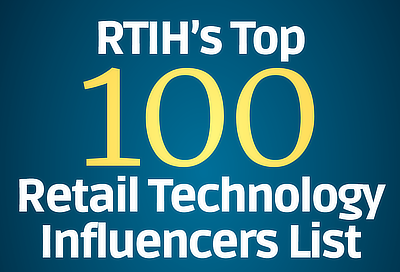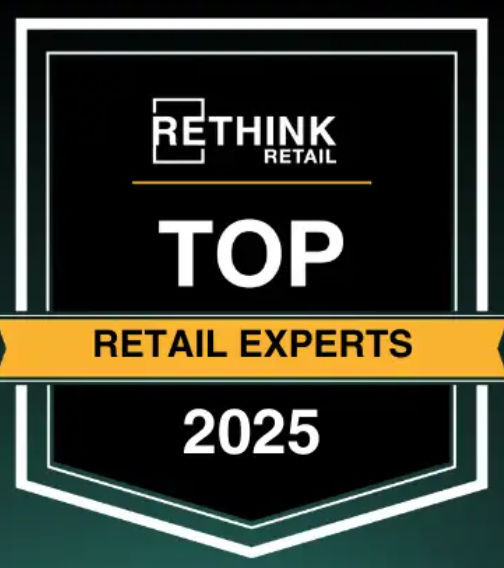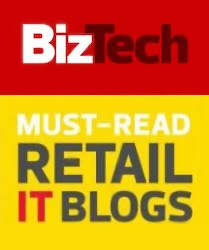Research
- December 13, 2021
RIS News Software LeaderBoard 2022
Find out which software vendors emerge as leaders in more than 50 rankings based on such key criteria as return on investment, innovation, total cost of operation, reliability, support, service, and customer satisfaction. A favorite annual RIS News Research Report.
- December 07, 2021
The Shopper Speaks: It’s more like a holiday marathon than a Cyber-5 sprint - Digital Commerce 360
Shoppers are not waiting for a bigger discount. They are aware of publicized supply chain issues and associated inventory shortages operating in a “buy it now mode” for a reasonable price.
Research firm Adobe Analytics, a unit of Adobe Inc. reports that so far this season (Nov. 1-29), consumers have already spent $109. billion online, growing significantly at 11.9% over last year.
- November 29, 2021
The 2021 Apparel Top 50
Discover the top 10 most profitable companies and how they harness technology to connect with consumers and run seamless operations — and see the full Apparel Top 50 ranking. -from RIS News
- November 22, 2021
7 Technologies Winning Retailers Are Prioritizing For 2022
There are very stark differences between retailers that are winning coming out of COVID and those that simply surviving at this point. What are those differences? How are they thinking differently? It’s not just more IT spend, but it is how and where it is being spent that is making the difference. -from IHL Group
- November 15, 2021
Forrester Predictions 2022
Disruption has ensued since the dawn of the digital era — but it exploded in intensity and breadth starting in 2020. In 2022, we’ll see a shift to modern application development and industry-specific clouds that will shake up the cloud service provider market. In 2022, the automation market will see more robotics, new AI vendors, and new frameworks.
- November 08, 2021
Great Attrition or Great Attraction? The Choice is Yours
A record number of employees are quitting or thinking about doing so. The pandemic has irrevocably changed what people expect from work. But our research suggests that leaders aren’t listening to their employees nearly enough. Don’t be one of these leaders. -from McKinsey & Company
- November 01, 2021
Grocery Tech Trends Study 2021 - Every Challenge Brings Opportunity
While the store is still the center of the grocery universe, how it is utilized is quickly pivoting. Over the next 12 months a quarter of grocers plan major click-and-collect and curbside investments, as they look to cater to consumers that prefer a contactless shopping experience. -from RIS News
- October 25, 2021
KPMG 2021 Consumer & Retail CEO Outlook Survey
A total of 74% plan to increase investment in new disruption-detection and innovation processes. Joining industry consortia focused on development of innovative technologies is on the agenda for 64%. More than half (58%) are looking to make their products and services available via an online-platform provider, including social media. And about one third (32%) will partner with third-party data providers.
- October 18, 2021
McKinsey The Next Normal: Emerging Stronger from the Coronavirus pandemic
Check out COVID-19 Implications for Business Section. We’re all tech executives now, to some extent. Across industries, competitive differentiation today emerges from superior digital capabilities and technology endowment, more agile delivery, and a progressively more tech-savvy C-suite.
- October 11, 2021
Bain & Company Technology Report 2021
Welcome to the new tech economy. Technology-fueled growth across all sectors is poised to accelerate. Tech-tonic Equity Shifts. The Case for Big Tech M&A. Tech Venture Capital Surges. SaaS is Spurring the Next Cycle of Software Super Performance.
- October 04, 2021
The Future of Commerce 2025
Statistics show that global e-commerce revenues are expected to reach more than $2.7 trillion in 2021 and will continue to rise to $3.4 trillion in 2025. The Covid-19 pandemic forced brands to reimagine their approach to the commerce experience, both in-stores and online. As brands begin to integrate new digital touch points as part of their buyer's journey, it is important they keep their finger on the pulse of innovation or they may fall behind the curve. -from Rethink Retail
- September 27, 2021
Sounding the Alarm – How Rapid Adoption of IoT Devices is Compromising Retail Security
32% of retailers admitted to rolling out technology without the same rigor and safeguards they normally would due to the rush and desire to capture sales during the pandemic. Only 61% of retailers consistently use hardware level security, and even fewer follow all security best practices. -from IHL Group
- September 20, 2021
Retail Statistics 2021: the 100 Most Insightful Stats You Shouldn’t Ignore
Around 85% of Americans have said that Covid-19 impacted their shopping habits in some way, including reduced overall spending, increased online shopping, and increased use of delivery services.
- September 13, 2021
2021 Holiday Retail Forecasts and Predictions
KPMG expects that 2021 holiday sales for U.S. retailers will be 7% higher than last year’s; The 7% growth is almost double the retail industry’s historical annual growth rate. Surveyed U.S. retail executives expect 2021 e-commerce holiday sales to grow 35% compared to the prior year. Retail execs anticipate that 2021 holiday sales will represent on average of 35% of their company’s total annual sales. -from RIS News
- September 06, 2021
Supply Chain Technology Study 2021 - Preparing for the Supply Chain of Tomorrow
To future-proof retail supply chains against the inevitable next round of disruptions, retailers are devoting 30% of their overall tech budgets to improving overall supply chain capabilities. The most future-forward technologies that show the highest levels of retailer interest are robotic automation — robots for picking and packing (20%), drone or self-driving customer delivery (16%), and robots/computer vision for shelf stock monitoring (16%). Dark stores (16%) also appear on the emerging tech list. -from RIS News
Page 9 of 35
















